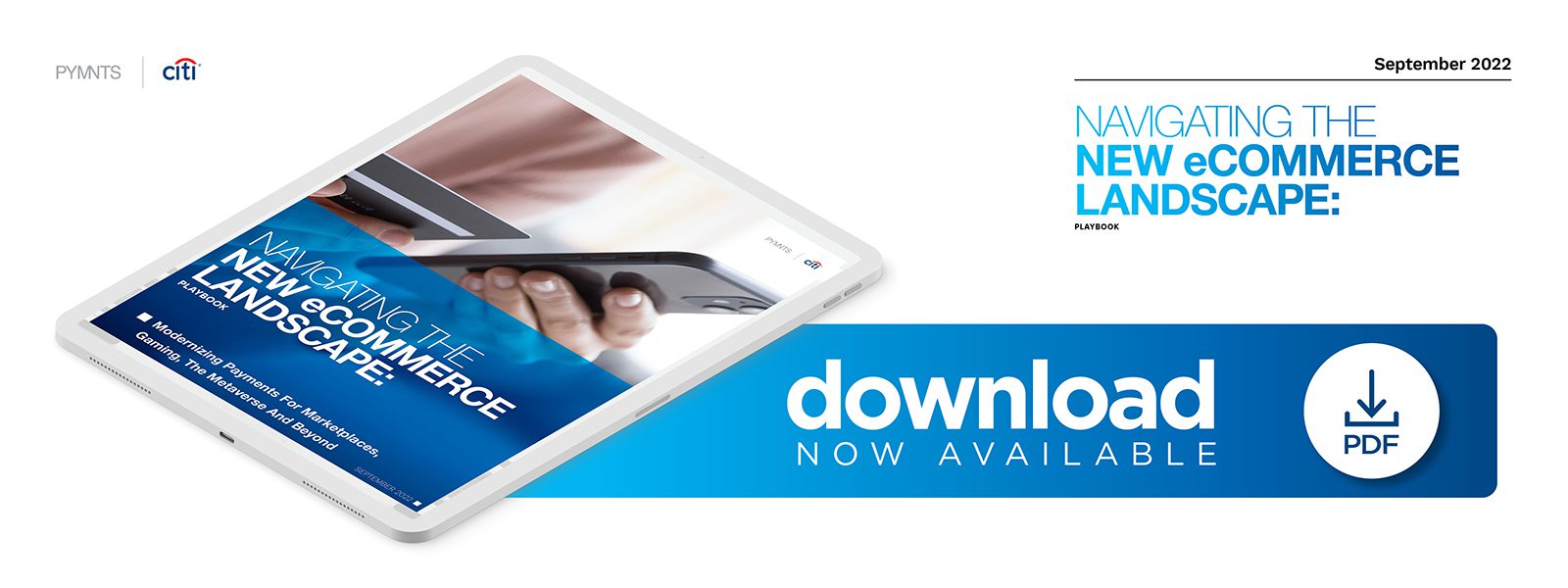The Real-World Tech That Smooths Payments in the Metaverse

 The new eCommerce landscape is complex and ever evolving: Businesses seeking to provide their customers with new virtual spaces like gaming environments have to adapt their payments management strategies to new technical and user experience challenges. “Navigating The New eCommerce Landscape: Modernizing Payments For Marketplaces, Gaming, The Metaverse And Beyond,” a PYMNTS and Citi collaboration, examines the challenges facing growing global businesses as the age of the metaverse dawns.
The new eCommerce landscape is complex and ever evolving: Businesses seeking to provide their customers with new virtual spaces like gaming environments have to adapt their payments management strategies to new technical and user experience challenges. “Navigating The New eCommerce Landscape: Modernizing Payments For Marketplaces, Gaming, The Metaverse And Beyond,” a PYMNTS and Citi collaboration, examines the challenges facing growing global businesses as the age of the metaverse dawns.
As businesses adapt to an “eCommerce anywhere” age, they are learning that new virtual spaces like gaming platforms and the metaverse require new ways of thinking about payments and user experience. Myriad challenges face global technology, communications and eGaming companies — ranging from managing multicurrency payments efficiently to ensuring universal know-your-customer (KYC) and know-your-business (KYB) compliance — and these difficulties often increase in complexity as businesses scale.
According to the report, challenges become even more burdensome as businesses grow, making rapid growth another risk organizations must manage. As these organizations attempt to meet consumers’ demand for modern shopping features, such as fast payments and digital asset downloads, the technical and security burdens involved often complicate their efforts to create, monitor and evolve seamless user experiences.
Risk Evolves With Technology and Business Growth
 Innovation always involves risk, and the new eCommerce landscape is no exception. The old challenges — security and user experience — are still there, but the strategies used to solve these problems must evolve at the same time. That means organizations are managing innovation and growth with little guidance on how to adapt to new issues while trying to solve old problems.
Innovation always involves risk, and the new eCommerce landscape is no exception. The old challenges — security and user experience — are still there, but the strategies used to solve these problems must evolve at the same time. That means organizations are managing innovation and growth with little guidance on how to adapt to new issues while trying to solve old problems.
To remove friction from payment experiences for creators, service providers and customers alike, organizations must manage elements ranging from multicurrency payment issues to user onboarding — all while monitoring transactions for suspicious activity. Fraud is a risk, as are money laundering and identity theft. That means true visibility across all transactions is essential to protect contractors, consumers and the organization.
Transparency is not just key to managing new payments strategies in new virtual spaces but critical to maintaining business growth over time. An open, honest conversation about legacy payments strategies and the tools that they rely upon, as well as which practices to modernize, is essential for businesses seeking to sustain growth in the new eCommerce sector. Organizations, according to the report, should opt for an objective review of payments strategies and processes.
It recommends that organizations look for vulnerabilities to noncompliance that may increase at scale, such as poor onboarding processes for new clients or contractors that fall short of KYC and KYB standards at any touchpoint and that they seek out a solution that offers global compliance monitoring in tandem with payments processing.
“Navigating The New eCommerce Landscape: Modernizing Payments For Marketplaces, Gaming, The Metaverse And Beyond” also details:
- Why building a metaverse-ready payments strategy requires the right technology.
- How legacy payments strategies require an audit to be scalable for the new eCommerce era.
- How to handle the reality that the metaverse has the same basic user experience requirements as legacy eCommerce — but consumers will always expect more as technology advances.
To learn more about payments strategy development for marketplaces, gaming companies, and the metaverse in general, download the report.
